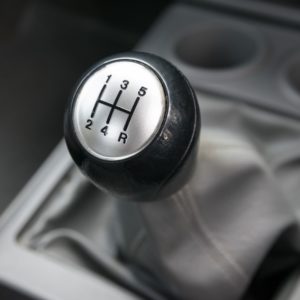In automatic transmission vehicles, the powertrain control module (PCM) or transmission control module (TCM) monitors the operation of the transmission and its components. It relies on input from various sensors. If the PCM detects an issue in the transmission, particularly in gear shifting, it might log a P0729 error code.
What Does the P0729 Code Mean?
Diagnostic trouble code (DTC) P0729 stands for “Gear 6 Incorrect Ratio.” The code is set once it is determined that the transmission is not in the desired gear.
Automatic transmissions shift gears using clutches to hold several elements of two or more planetary gear sets with varying gear ratios. Torque converters are used between the engine and transmission to increase engine torque and drive the rear wheels.

Newer vehicles often have more than four gear ratios for better fuel economy. The control modules also determine when to shift up or down between gears depending on various data, such as throttle position and vehicle speed.
The TCM uses data from various sensors to keep track of the transmission’s performance. For example, gear ratio and torque converter slip are determined by comparing engine speed to the transmission speed sensor. Code P0729 will be set if the calculation falls far from the desired range.
Driving with this trouble code isn’t recommended. So have your vehicle inspected by a trusted mechanic right away once your OBD scan tool retrieves this code.
For a more technical understanding of P0729, read our advanced discussion about planetary gearsets.

Note: The definition of code P0729 might be different depending on the vehicle manufacturer. Consult the appropriate repair manual or repair database for the exact code definition.
What are the Common Causes of the P0729 Code?
- Bad TCM
- Internal transmission failure
- Low transmission fluid
- Failed transmission valve body
- Wiring problem
- Internal transmission failure
What are the Common Symptoms of the P0729 Code?

- Poor fuel economy
- Improper transmission shifting
How to Diagnose a P0729 Code
P0729 is a generic code, but that doesn’t mean that there’s only one way to determine what’s causing it. The process tends to vary depending on the vehicle, so it’s best to take your vehicle to a professional for a proper diagnosis.
On the other hand, if you have the tools and know-how to diagnose code P0729, you can go ahead and do it yourself.
How to Fix a P0729 Code
Troubleshooting error codes can be tricky, and the P0729 error code is no exception. If you attempt to solve the problem on your own without the right tools or knowledge, you’ll risk making the issue worse. So it’s best to let a professional clear the code for you.
However, if you’re a seasoned auto repair DIYer, you can go ahead and resolve the code yourself. Before you begin, make sure to read the appropriate manual or consult an online repair database for vehicle-specific repair information.
An In-Depth Look at the Planetary Gearset
The heart of the automatic transmission (except on chain-type continuous variable units) is the planetary gear set. There are multiple planetary gearsets in most newer transmissions.
The planetary gearset in its basic form consists of a sun gear, a ring gear, and planet gears in between, with the planet gears spinning on shafts connected to a “planet carrier.”
Holding the planet gear carrier stationary while driving the sun gear will spin the ring gear backwards. That’s basically how reverse works. Holding the sun gear while driving the ring gear provides one gear, and holding the ring gear while driving the sun gear provides yet another range. Holding the sun gear while driving the planet carrier provides yet another gear.
Most modern transmissions have multiple planetary gearsets and even share gears among themselves.
The way the different elements are held or driven depends on hydraulic application of clutches and “holding members” that work like brakes. These driving and holding members are connected to the various elements. There are also one-way clutches usually called “sprag” or “roller” type clutches that are purely mechanical.
The hydraulics that apply the holding members (brakes) and driving clutches are controlled by spool valves in the valve body along with solenoids that control line pressure and either trap or release pressure from various channels.
Gear selection is made with a large manually operated spool valve that is connected to the shift linkage to determine the gear range selected by the driver. Park engages a large locking device called a “pawl” in a heavy gear to prevent the output shaft from turning.
Older transmissions had a mechanical governor and an output sensor to drive the speedometer cable. Newer transmissions are electronically controlled by the PCM or TCM.
You can learn more about how codes like P0729 are set in our technical discussion about gear ratios.
Any information provided on this Website is for informational purposes only and is not intended to replace consultation with a professional mechanic. The accuracy and timeliness of the information may change from the time of publication.


















